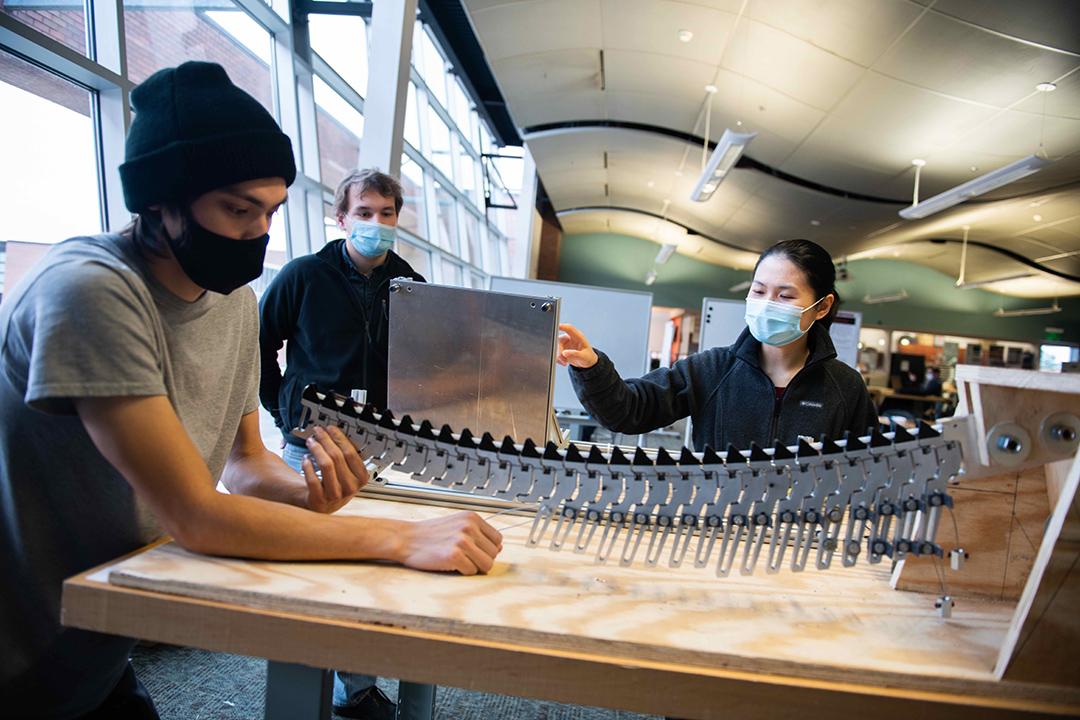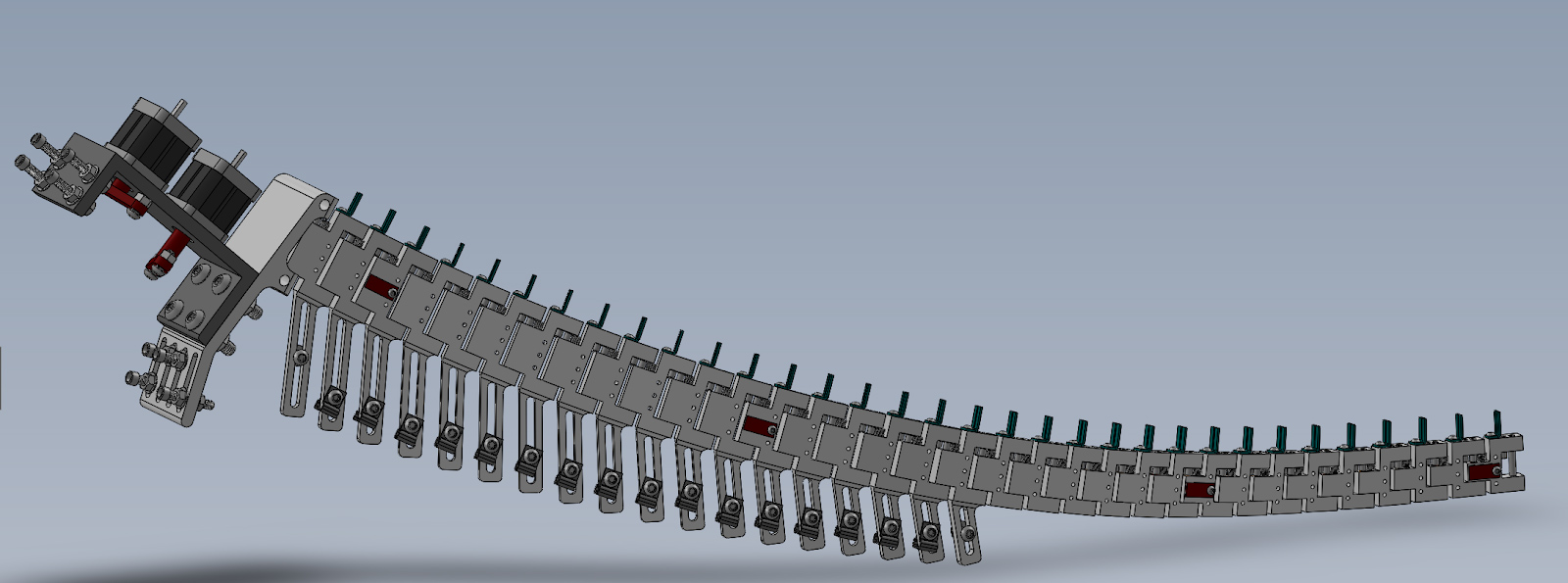Hands-on engineering senior design program flourishes this fall
Program increases projects and connections despite pandemic challenges
Gabrielle Plucknette-DeVito
Engineering students (left to right) Joseph Samuelson, Stefan Maczynski, and Kaiya Li work on a 3-foot model Dreadnoughtus tail as part of their senior design project. This was one of the more than 80 project underway this year in the engineering college.
RIT’s Multidisciplinary Senior Design program began last fall with more projects for engineering student teams than expected, despite the pandemic.
From collaborations with other universities and NASA to an anthropologist needing a robotic model of a dinosaur tail, all the projects represent innovative technologies built with sustainable, user-friendly designs.
Gabrielle Plucknette-DeVito
Joseph Samuelson aligns the different components of the model dinosaur tail. The team of mechanical and electrical engineering students built the model over the summer and fall.
Any concerns about how the hands-on program would take place during the pandemic were eased as connections with campus, corporate partners, and nonprofit organizations via Zoom meetings increased project communication, said Beth DeBartolo, director of the Multidisciplinary Senior Design Program (MSD).
What had been primarily an onsite class in the engineering building design space became a “flex class” to adapt to the pandemic environment—access to the design space remained but students also had more flexibility in how they could interact with project sponsors, some from around the country.
“We did all of the instruction online and the vast majority of class time was reserved for working meetings. We have some international students who are taking this course remotely, and some domestic students who just want to reduce their risk of getting sick. We’ve had students in and out of quarantine; it’s just so much easier to meet in Zoom. And the clients they are working with don’t have to drive to campus,” said DeBartolo, who is also an associate professor of mechanical engineering.
Gabrielle Plucknette-DeVito
Each of the components of the tail model were built by the students in the mechanical shop and 3D print laboratories in the engineering college.
More than 80 projects are part of the 2020-21 Multidisciplinary Senior Design program. Based in RIT’s Kate Gleason College of Engineering and involving more than 430 students, MSD is a required, two semester, design-based course for engineering students. Over the year, students work with faculty and professional guides as mentors who provide guidance about how new products or services are developed using engineering and user-centered design principles. At the end of the program, teams produce working prototypes; some are functional hardware, others may be process improvements or software.
The senior design program has grown, especially in the past few years. More professional guides participate and bring experience through the Simone Center to coach teams about entrepreneurial development of new products or services.
Many projects focus on assistive technologies, sustainability, corporate projects, and requests from the different performance race teams developing high-tech systems prior to competitions. Most recently, students returning from co-op have initiated projects specific to work they did while at companies, and companies in turn sponsor the work. Others are collaborations with faculty who include students in their research work.
One project, a collaboration between faculty-researchers at RIT and Drexel University, students are building a 3-foot swinging dinosaur tail, modeled on the Dreadnoughtus, to help researchers study the way it moves through actuation models and biomechanics. Meeting in person to build the complicated structure, despite the onsite restrictions, was an asset, said Stefan Maczynski, a fifth-year electrical engineering student from Canandaigua, N.Y.
“Physical systems simply cannot be constructed remotely, and our project is almost entirely a physical deliverable. We are able to stay productive, and currently, our projections show us completing the final assembly within the deadline of the end of the semester,” said Maczynski, who is part of the six-member team. “By our definition, being able to succeed is the largest metric of a good working experience. We need to be careful and virus-conscious, but we are able to stay safe and productive at the same time. So long as we stay safe, and are able to complete our work, every day is a good day.”
Students are building a 3-foot swinging dinosaur tail, modeled on the Dreadnoughtus, to help researchers study the way it moves through actuation models and biomechanics.










